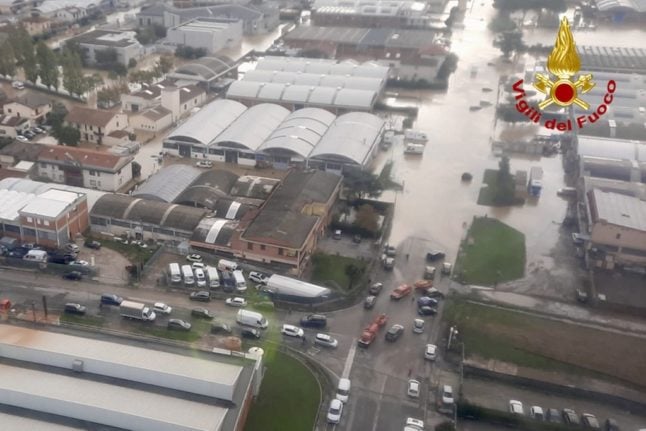Antonio Tumolo, 84, was “found in the early afternoon in Prato”, a city northwest of Florence, a spokesman for the region told AFP, confirming the death toll had reached eight.
The body of Tumolo, whose family had reported him missing, was found in a plant nursery some 15 kilometres from where he lived, Italian media reports said.
His crushed car had already been found, apparently swept up by a torrent of water.
More than a dozen people died across Western Europe after Storm Ciaran brought heavy downpours and record winds late last week.
IN PHOTOS: Storm Ciarán causes deadly flooding in Italy
In Tuscany, the storm swelled the Arno River, which runs through Florence, and transformed streets in many of the region’s villages into rivers, washing away cars in a rush of water and mud.
The storm was estimated to have caused some half a billion euros in damage in Tuscany, Italian news agency Ansa reported.
Several regions remained on alert on Tuesday with further storms expected
Veneto, the region Venice and Verona belong to, was under a moderate-level amber alert, while Emilia Romagna, Lombardy, Abruzzo, Lazio, Molise, Campania and Umbria were on a lower-level yellow alert.
Extreme weather events have highlighted Italy’s exposure to hydrogeological risk including flooding and landslides.
“The fragility of Italy in the face of climate change will be a problem,” European Commissioner for Economy and former Italian premier Paolo Gentiloni said on Sunday.



 Please whitelist us to continue reading.
Please whitelist us to continue reading.
Member comments